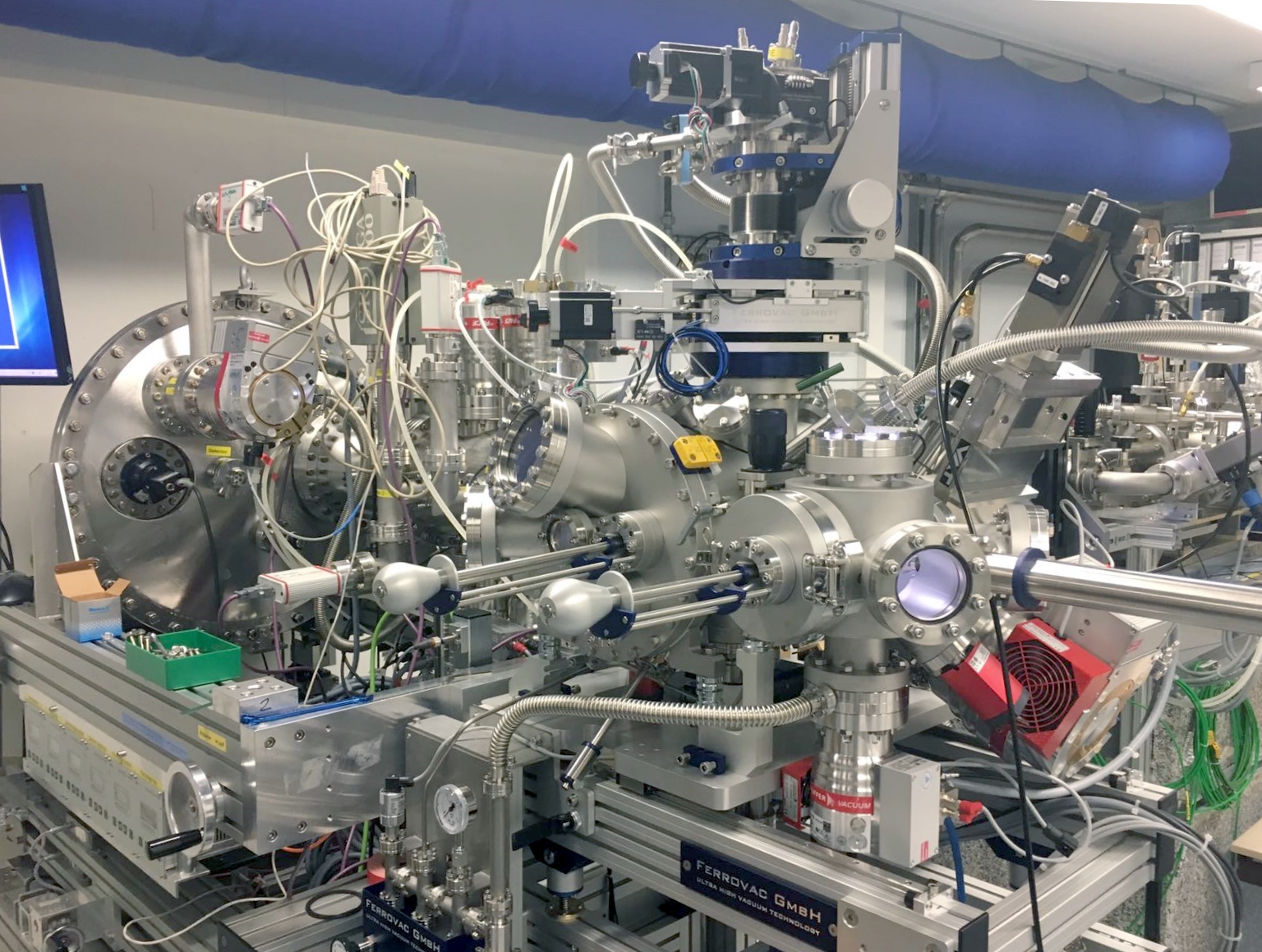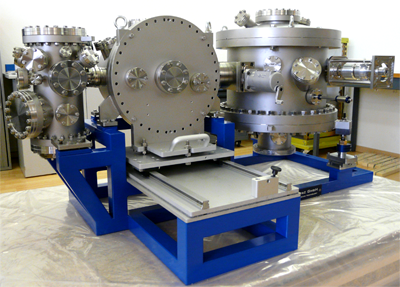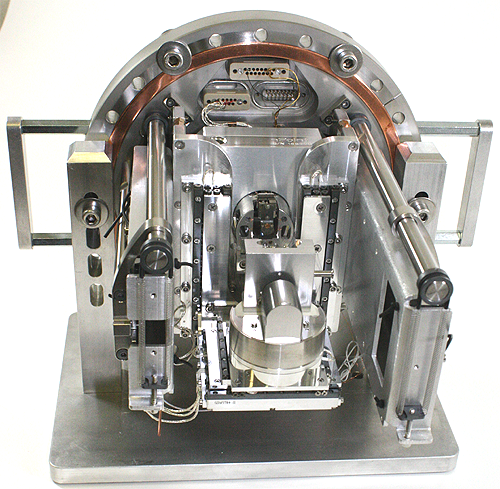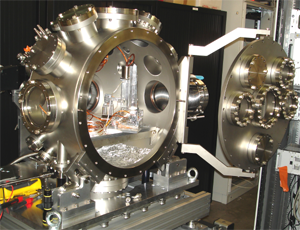Publications
Probing the solid–liquid interface with tender x rays: A new ambient-pressure x-ray photoelectron spectroscopy endstation at the Swiss Light Source
Zbynek Novotny, Dino Aegerter, Nicolò Comini, Benjamin Tobler, Luca Artiglia, Urs Maier, Thomas Moehl, Emiliana Fabbri, Thomas Huthwelker, Thomas j. Schmidt, Markus Ammann, Jeroen A. van Bokhoven, Jörg Raabe and Jürg Osterwalder
Review of Scientific Instruments 91, 023103 (2020)
link?

Design and performance of AERHA, a high acceptance high resolution soft x-ray spectrometer

April 2014
Review of Scientific Instruments 85, 043108 (2014); doi: 10.1063/1.4871362
Sorin G. Chiuzbian, Coryn F. Hague, Antoine Avila, Renaud Delaunay, Nicolas Jaouen, Maurizio Sacchi,
François Polack, Muriel Thomasset, Bruno Lagarde, Alessandro Nicolaou, Stefania Brignolo, Cédric Baumier,
Jan Lüning, and Jean-Michel Mariot
Ferrovac would like to thank the authors for mentioning us in the acknowledgment.
View online: link?
View Table of Contents: http://scitation.aip.org/content/aip/journal/rsi/85/4?ver=pdfcov
Published by the AIP Publishing
Design and performance of a combined secondary ion mass spectrometry-scanning probe microscopy instrument for high sensitivity and high-resolution elemental three-dimensional analysis
June 2012
Tom Wirtz, Yves Fleming, Mathieu Gerard, Urs Gysin, Thilo Glatzel, Ernst Meyer, Urs Wegmann, Urs Maier, Aitziber Herrero Odriozola, and Daniel Uehli

State-of-the-art secondary ion mass spectrometry (SIMS) instruments allow producing 3D chemical
mappings with excellent sensitivity and spatial resolution. Several important artifacts however
arise from the fact that SIMS 3D mapping does not take into account the surface topography of
the sample. In order to correct these artifacts, we have integrated a specially developed scanning
probe microscopy (SPM) system into a commercial Cameca NanoSIMS 50 instrument. This new
SPM module, which was designed as a DN200CF flange-mounted bolt-on accessory, includes a new
high-precision sample stage, a scanner with a range of 100 μm in x and y direction, and a dedicated
SPM head which can be operated in the atomic force microscopy (AFM) and Kelvin probe force microscopy
modes. Topographical information gained from AFM measurements taken before, during,
and after SIMS analysis as well as the SIMS data are automatically compiled into an accurate 3D
reconstruction using the software program “SARINA,” which was developed for this first combined
SIMS-SPM instrument. The achievable lateral resolutions are 6 nm in the SPM mode and 45 nm in the
SIMS mode. Elemental 3D images obtained with our integrated SIMS-SPM instrument on Al/Cu and
polystyrene/poly(methyl methacrylate) samples demonstrate the advantages of the combined SIMSSPM
approach.
© 2012 American Institute of Physics.
IRMA-2 at SOLEIL: a set-up for magnetic and coherent scattering of polarized soft x-rays

April 2012
M Sacchi et al 2013 J. Phys.: Conf. Ser. 425 202009
M Sacchi, H Popescu, R Gaudemer, N Jaouen, A Avila, R Delaunay, F Fortuna, U Maier and C Spezzani
We have designed, built and tested a new instrument for soft x-ray scattering experiments. IRMA-2 is a UHV set-up for elastic and coherent scattering experiments developed at the SEXTANTS beamline of the SOLEIL synchrotron. Applications will be in the field of solid state physics, with emphasis on the investigation of the magnetic properties of artificially structured materials.
Three dimensional imaging using secondary ion mass spectrometry and atomic force microscopy
September 2011
Yves Fleming, Tom Wirtz, Urs Gysin, Thilo Glatzel, Urs Wegmannb, Ernst Meyer, Urs Maier, Jörg Rychen
With the breakthroughs in lateral resolution with regards to secondary ion mass spectroscopy in recent years, new areas of research with much promise have opened up to the scientific community. Even though the much improved lateral resolution of 50 nm can effectively deliver more accurate 3D-images, the traditional 3D reconstructions, consisting of compiling previously acquired successive secondary ion mass spectrometry images into a 3D-stack, do not represent the real localized chemical distribution of the sputtered volume. Based on samples initially analyzed on the Cameca NanoSIMS 50 instrument, this paper portrays the advantages of combining the topographical information from atomic force microscopy and the chemical information from secondary ion mass spectrometry. Taking account of the roughness evolution within the analyzed zone, 3D reconstructions become a lot more accurate and allow an easier interpretation of results. On the basis of an Al/Cu sample, a comparison between traditional 3D imaging and corrected 3D reconstructions is given and the advantages of the newly developed 3D imaging method are explained.
 CH Switzerland
CH Switzerland


